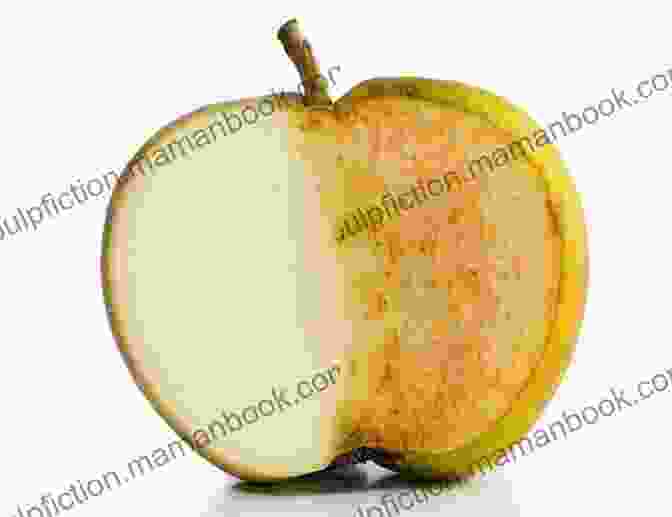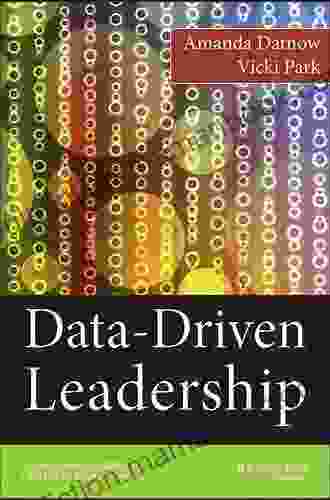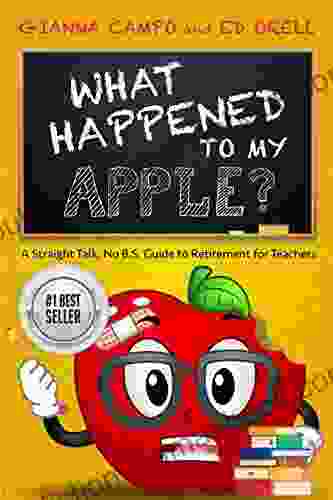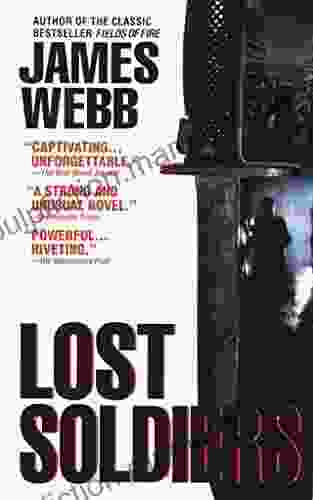What Happened to My Apple? Delving into the Science of Food Degradation and Preservation

The Perplexing Case of Apple Browning
Apples, the quintessential symbol of freshness and nourishment, are not immune to the relentless forces of nature. Their once-vibrant flesh gradually succumbs to discoloration, leaving us pondering, "What went wrong?" To unravel this mystery, we delving into the intricate world of food degradation and preservation.
4.6 out of 5
| Language | : | English |
| File size | : | 2645 KB |
| Text-to-Speech | : | Enabled |
| Enhanced typesetting | : | Enabled |
| Word Wise | : | Enabled |
| Print length | : | 85 pages |
| Lending | : | Enabled |
| Screen Reader | : | Supported |

Unveiling the Culprits: Enzymatic and Non-Enzymatic Browning
The unappetizing brown hue that mars our apples is the result of two distinct biochemical processes: enzymatic and non-enzymatic browning. Enzymatic browning, the more prevalent perpetrator, occurs when an enzyme called polyphenol oxidase (PPO) reacts with compounds known as phenols, abundant in apples. This interaction triggers a cascade of reactions, leading to the formation of melanin, the dark pigment responsible for the undesirable color change.
Non-enzymatic browning, on the other hand, skips the enzymatic step, allowing phenols to react directly with oxygen, again resulting in melanin production. This process, though less common, can also contribute to apple browning, particularly in acidic environments.
Ethylene: The Unseen Orchestrator of Ripening and Browning
The presence of ethylene, a plant hormone, plays a pivotal role in the ripening of apples. As apples mature, they naturally produce ethylene, which triggers a cascade of biochemical changes that soften the fruit, enhance its sweetness, and reduce its acidity. However, this ripening process also comes with a consequence: increased susceptibility to browning.
Ethylene promotes the production of PPO, the enzyme responsible for enzymatic browning. It also weakens the cell walls, making apples more vulnerable to physical damage and subsequent browning. Thus, ethylene acts as a double-edged sword, enhancing fruit quality while hastening its deterioration.
Strategies for Apple Preservation: Defying the Inevitable
Understanding the mechanisms behind apple browning empowers us to devise effective strategies to extend their shelf life and preserve their freshness. Employing these techniques, we can savor the crispness and sweetness of apples for longer periods:
1. Refrigeration: A Chilling Tale of Slowed Deterioration
Cold temperatures slow down the natural ripening and browning processes. Storing apples in the refrigerator at temperatures around 32°F (0°C) significantly reduces ethylene production and PPO activity, effectively prolonging their lifespan.
2. Modified Atmosphere Packaging (MAP): Creating an Optimal Atmosphere
MAP involves storing apples in sealed packaging with a modified gas composition. By reducing oxygen and increasing carbon dioxide levels, this technique creates an environment that inhibits ethylene production, PPO activity, and microbial growth, extending the shelf life of apples by several weeks.
3. Controlled Atmosphere Storage (CAS): A Fine-Tuned Approach
CAS is an advanced form of MAP where the gas composition, temperature, and humidity are meticulously controlled to create optimal storage conditions. This technique is particularly effective for long-term storage, allowing apples to retain their freshness and quality for months.
4. Antioxidants: Nature's Guardians Against Browning
Antioxidants, such as ascorbic acid (vitamin C) and citric acid, can neutralize free radicals, the unstable molecules that contribute to non-enzymatic browning. Adding these antioxidants to apple-based products, such as juices or slices, can help prevent discoloration.
: Embracing the Journey of Apple Preservation
The journey of apple degradation and preservation is a testament to the intricate interplay between natural processes and our ingenuity. By understanding the science behind browning and employing effective preservation techniques, we can savor the crispness and nutritional benefits of apples for extended periods. Embrace the challenge of preserving nature's bounty and enjoy the rewards of fresh apples that defy the passage of time.
4.6 out of 5
| Language | : | English |
| File size | : | 2645 KB |
| Text-to-Speech | : | Enabled |
| Enhanced typesetting | : | Enabled |
| Word Wise | : | Enabled |
| Print length | : | 85 pages |
| Lending | : | Enabled |
| Screen Reader | : | Supported |
Do you want to contribute by writing guest posts on this blog?
Please contact us and send us a resume of previous articles that you have written.
 Top Book
Top Book Novel
Novel Fiction
Fiction Nonfiction
Nonfiction Literature
Literature Paperback
Paperback Hardcover
Hardcover E-book
E-book Audiobook
Audiobook Bestseller
Bestseller Classic
Classic Mystery
Mystery Thriller
Thriller Romance
Romance Fantasy
Fantasy Science Fiction
Science Fiction Biography
Biography Memoir
Memoir Autobiography
Autobiography Poetry
Poetry Drama
Drama Historical Fiction
Historical Fiction Self-help
Self-help Young Adult
Young Adult Childrens Books
Childrens Books Graphic Novel
Graphic Novel Anthology
Anthology Series
Series Encyclopedia
Encyclopedia Reference
Reference Guidebook
Guidebook Textbook
Textbook Workbook
Workbook Journal
Journal Diary
Diary Manuscript
Manuscript Folio
Folio Pulp Fiction
Pulp Fiction Short Stories
Short Stories Fairy Tales
Fairy Tales Fables
Fables Mythology
Mythology Philosophy
Philosophy Religion
Religion Spirituality
Spirituality Essays
Essays Critique
Critique Commentary
Commentary Glossary
Glossary Bibliography
Bibliography Index
Index Table of Contents
Table of Contents Preface
Preface Introduction
Introduction Foreword
Foreword Afterword
Afterword Appendices
Appendices Annotations
Annotations Footnotes
Footnotes Epilogue
Epilogue Prologue
Prologue Frank Dixon
Frank Dixon Jory Smith
Jory Smith Vinoth Kubrick
Vinoth Kubrick Vicki Lundine
Vicki Lundine Sandeep Dayal
Sandeep Dayal Alex Simonson
Alex Simonson Robin Wright
Robin Wright Aric Davis
Aric Davis Michael Stagg
Michael Stagg Ursula Rani Sarma
Ursula Rani Sarma Margaret Frazer
Margaret Frazer Sean Brock
Sean Brock Robin King
Robin King Yettish Sr
Yettish Sr Don Miguel Ruiz
Don Miguel Ruiz Marie Greene
Marie Greene Cassandra Johnson
Cassandra Johnson John Malam
John Malam Timothy J Minchin
Timothy J Minchin Mark Grabowski
Mark Grabowski
Light bulbAdvertise smarter! Our strategic ad space ensures maximum exposure. Reserve your spot today!

 Emmett MitchellDomestic Girlfriend 247: Kei Sasuga's Masterpiece of Love, Betrayal, and...
Emmett MitchellDomestic Girlfriend 247: Kei Sasuga's Masterpiece of Love, Betrayal, and...
 Eugene ScottLethal Defense: A Gripping Legal Thriller with Nate Shepherd, the Unsung Hero...
Eugene ScottLethal Defense: A Gripping Legal Thriller with Nate Shepherd, the Unsung Hero... Melvin BlairFollow ·15.6k
Melvin BlairFollow ·15.6k Ryūnosuke AkutagawaFollow ·13.3k
Ryūnosuke AkutagawaFollow ·13.3k Jeremy MitchellFollow ·4.6k
Jeremy MitchellFollow ·4.6k Jonathan FranzenFollow ·8.5k
Jonathan FranzenFollow ·8.5k Ken SimmonsFollow ·10.5k
Ken SimmonsFollow ·10.5k Mike HayesFollow ·2.6k
Mike HayesFollow ·2.6k Shawn ReedFollow ·16.4k
Shawn ReedFollow ·16.4k Nikolai GogolFollow ·4.9k
Nikolai GogolFollow ·4.9k

 Joseph Conrad
Joseph ConradExport Now: Five Keys to Entering New Markets
Are you looking to expand your business into...
 Christopher Woods
Christopher WoodsElvis Presley: The King of Rock and Roll and an Icon of...
Elvis Presley was an...

 Kelly Blair
Kelly BlairData-Driven Leadership: A Comprehensive Guide for...
In today's rapidly changing educational...

 Joe Simmons
Joe Simmons37 Stories of Canine Companionship and Courage
Dogs have been our...

 Martin Cox
Martin CoxChilling Psychological Thriller With Twist: Brace...
Prepare yourself for...
4.6 out of 5
| Language | : | English |
| File size | : | 2645 KB |
| Text-to-Speech | : | Enabled |
| Enhanced typesetting | : | Enabled |
| Word Wise | : | Enabled |
| Print length | : | 85 pages |
| Lending | : | Enabled |
| Screen Reader | : | Supported |










